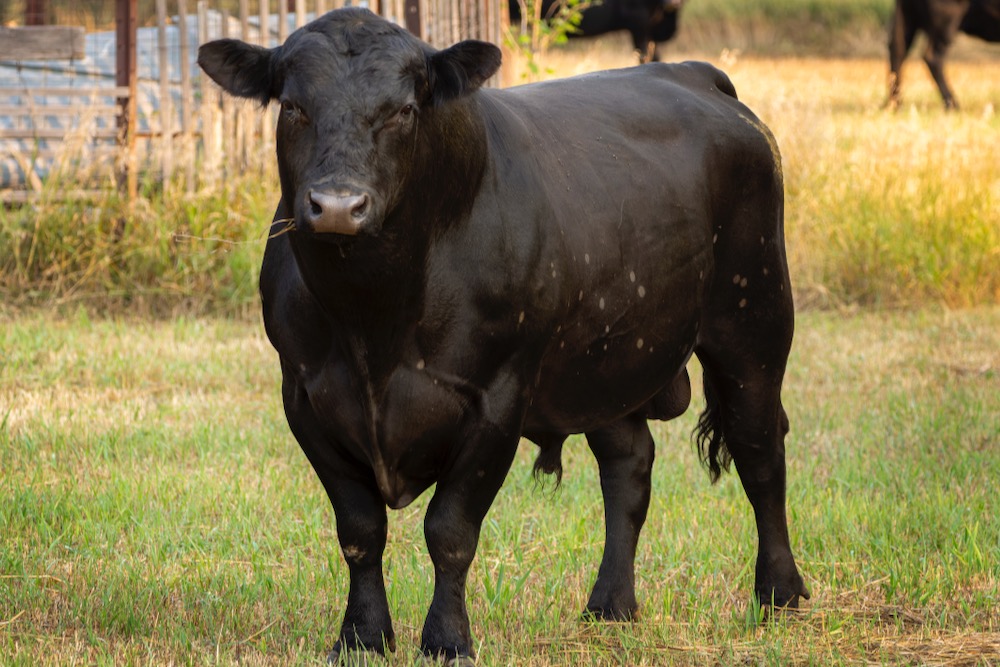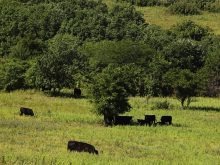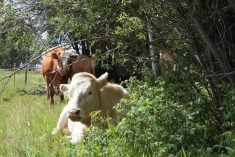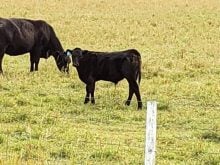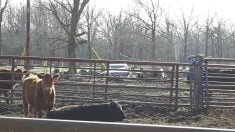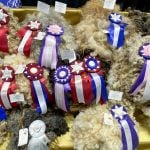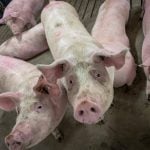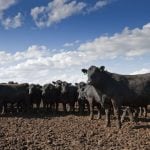If there’s something the market desires, there’s no doubt that purebred beef breeders can make it happen.
A few years ago we did notice breed averages for scrotal size coming up a bit, so the minimum accepted scrotal sizes were adjusted up just a bit (one centimetre) in some cases.
I think that is about right, as bulls right on or just below breed minimum will almost always fail to give you an adequate semen sample. The question now is, in some cases, is scrotal size getting too big, and if so, is that detrimental to fertility in the long run? Along with this, though, we need some consistency in measurement as well.
Read Also

Health hazards are often overlooked risks on the farm
While quite different from the dangers posed by farm machinery, hazards such as loud noise or sun exposure require the same proactive attention, the Canadian Agricultural Safety Association says.
We used to get a big variation among the measurements conducted by veterinarians on bulls when the metal scrotal tape was used. There was no guide as to how hard to pull.
We are compressing scrotal skin, but some went too hard and others too loose, so the discrepancy between veterinarians could be a few centimetres. Then came along the ReliaBull scrotal tape with the spring-tension device so everyone should be pulling at the same rate. I found veterinarians and producers alike were very close when scrotal measuring.

Most purebred breeders want the scrotal measurements to be accurate so they know of a problem ahead of time and can do something about it, such as eliminating a bull from a sales offering.
With better genetic selection and with scrotal size of your bull being one of the many things you look for, we have a higher percentage making well above the breed minimum. Again, if for his age and breed a bull is at or above the breed minimum and there is a good semen sample, then there’s no reason to cull him because of semen quality. There could be myriad other reasons, and each breeder has their culling criteria.
The issue sometimes becomes the very large scrotal size, and I am talking way above the breed average for age. It is then that semen quality can go down. I’ve seen that in yearlings — say, Simmentals — that get much above 42 cm in the 12-to-15-month range.
It’s generally accepted that you don’t get any more semen production in scrotal size above 39 cm, so scrotal circumferences well above 40-42 on these yearlings to long yearlings don’t have any advantage.
Whenever I would get yearlings above 42 the breeder was usually worried, as many did not pass their semen test.
I’ve observed really large testicles that were simply a mass of scar tissue, so beware, as too large a scrotal size can sometimes be a curse. These very large scrotal sizes, even if fertile, mean a very large mature bull scrotal size. I can almost guarantee decreasing longevity of the bull for those approaching 50 cm or above.
They are prone to injury or their suspensory apparatus may break down over time. We have seen these large-testicular bulls get abrasions and puncture wounds and every time this happens, inflammation follows, leading to potential fertility problems.
One must be cognizant that in summer the scrotum will hang low for natural heat regulation. The temperature of the scrotum and testicles will be slightly lower than body temperature. The opposite happens in the winter, when the testicles are pulled up closer to the body so ideal temperature is maintained.
If the suspensory apparatus is stretched on these big-scrotumed bulls, they lose their ability to pull the large heavy testicles up. As a result, they are highly susceptible to frostbite.
Purebred breeders need to watch large testicles on both sides of the pedigree.
Let’s try and get some consistency and have all veterinarians use the ReliaBull scrotal tape with the spring mechanism in it.
The measurer of the bulls should be stated in the sales catalogue. If it is the owner, that’s fine, as long as there is total transparency.
Remember, U.S. producers and veterinarians measure their bulls differently and don’t pull the tape tight, just snug. This always gives bulls a measurement two to four cm above what we would get in Canada.
Whether a purebred or commercial breeder, always pay good attention to the scrotal size of the bull you are buying and make your selections on that, as well as other parameters you desire in your herd.

